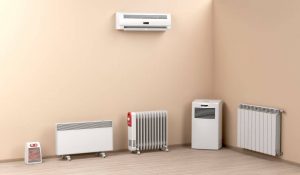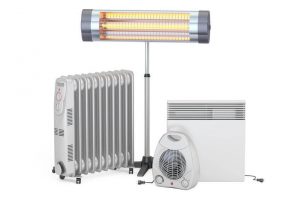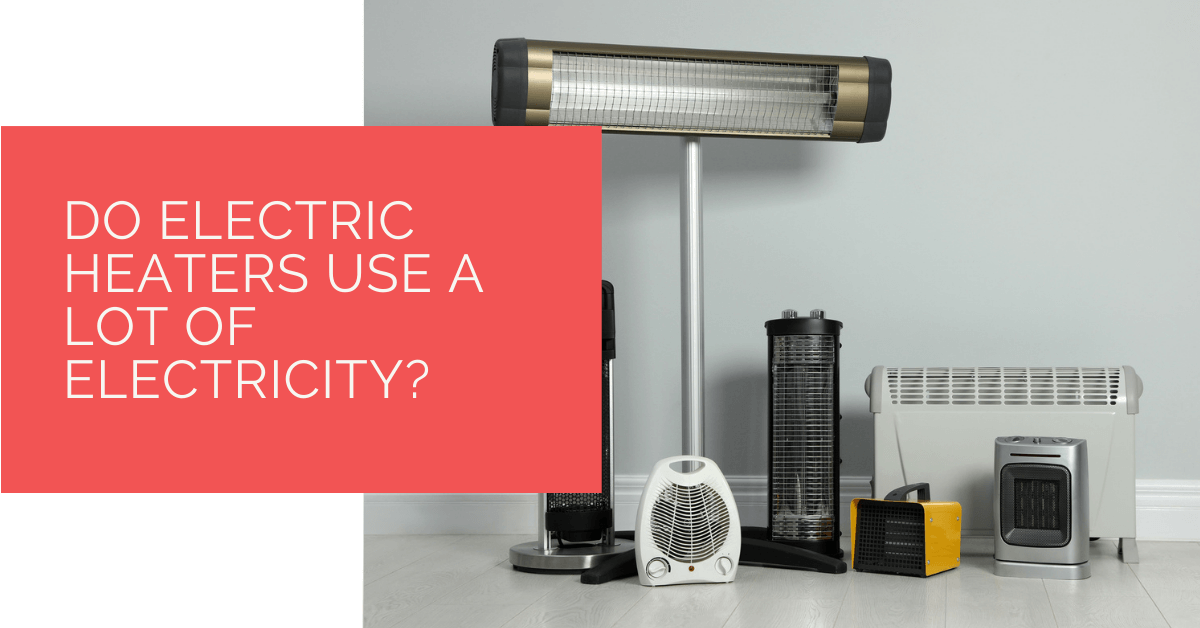As the weather turns colder, it’s an enticing thought to switch from using a traditional heater to an electric heater. The draw of an electric heater is that it does not give out any emissions, making it more environmentally friendly as compared to other alternatives.
This makes it seem like the ideal solution to staying warm when the cold season arrives.
While the idea of switching to an electric heater is appealing, it can also be challenging. These heaters are an expensive investment due to their excessive power consumption.
To answer the entitled question, electric heaters do consume a significant amount of electricity. However, it does not have to be an exorbitant cost if appropriately regulated.
Read to find how much electricity different kinds of electric heaters consume. By the end of this article, you’ll also be able to determine if an electric heater is a wise investment for your house.
Contents
Key Takeaways
- Electric heaters consume significant electricity, leading to high energy costs, especially during extreme cold weather.
- Various types of electric heaters are available, each with its energy consumption patterns. Some, like radiant cove heaters, are more energy-efficient than others.
- You can calculate the energy consumption of an electric heater by knowing its wattage and the number of hours it runs, helping you make an informed decision about your heating needs and costs.
Types of Electric Heaters
Do you want to add electric heaters to your home to make it warmer? Well, think no more as numerous solutions are available, ranging from permanently mounted heaters to plug-in systems to fit any heating situation.
Let’s look at the few known types of heaters and their energy consumption patterns.
Electric Baseboard Heaters
A home that relies exclusively on electricity for heat will often have at least some permanently installed and hardwired electric baseboard heaters. They will also have portable plug-in units for installation in a particular room.
Electric baseboard heaters, on average, consume more energy than a heat pump. This translates to increased electric costs, especially during the most brutal winter months when the heating system is running tirelessly to keep your house warm.
Built-In Wall Heaters
Electric wall heaters are available in various styles and forms, so there’s one for each setting.
While the power supply is not the most energy-efficient method to heat a home, built-in wall heaters save energy because they are tailored to heat a particular area.
The majority of built-in wall heaters consume roughly 1,500 Watts of energy.This number might be worrisome now but the costs can soon pile up if heaters are left running for long hours each day.

Radiant Cove Heaters
Radiant heaters, unlike convection heaters, heat objects in their path instead of the air. Installing a radiant floor heating system is one option to reap the benefits of radiant heat throughout a room.
Radiant heaters offer a variety of benefits. Since they minimise duct losses, they are much more economical in terms of electricity costs than the baseboard and forced-air heaters.
People with allergies typically prefer radiant heat since it does not spread contaminants as forced-air systems do.
Toe-Kick Heaters
Toe-kick heaters, also called kick-space heaters or plinth heaters, are yet another compact solution for spaces with toe-kicks, indented regions between the foot of cupboard doors and the ground.
Heaters built like deep, rectangular tubes are modified to fit into this space. On the high setting, most toe-kick heaters for households use utilise roughly 1500 watts per hour of electricity.
This produces approximately 5000 BTUs of heat every hour. If the room is relatively airtight and adequately insulated, it should be enough to heat it with a basic low ceiling.
Mica Thermic Panel Heaters
One of the most newly created electrical heaters, mica thermic panels are flat and incredibly thin. Most varieties may either be used as freestanding heaters or installed on walls.
When a mica thermic heater is turned on, the mica panels give around 20% radiant heat and 80% convection heat. It is for this reason that mica thermic heaters are thermally efficient.
They are better at providing heat in the short term. Thus, they require less electricity in the long run. They employ an electrical resistor, which, when turned on, transforms electricity into heat.
How to Calculate the Energy Consumption of an Electrical Heater?
The wattage of your electric heater is an essential component for determining how much energy it consumes. You can find that information on the user’s handbook or the product itself.
The wattage of your electric heater indicates how much electricity is required to run it. The majority of electric heaters have a wattage of 1,500 watts. However, others have slightly less or slightly more significant.
Let us assume you have a 1,500-watt electric heater. 1,000 watts equals 1 kilowatt; thus, your heater consumes 1.5 kilowatts of energy.
On the other hand, your electric bill is calculated in kilowatt-hours, which is the amount of energy consumed by a 1-kilowatt appliance for one hour.
Use this method to calculate how much utilising that 1.5-kilowatt electric heater will cost: Multiply the number of watts used by the number of hours you want to use your electric heater.
You probably won’t go fetch the calculator at the end of each day, but understanding this basic concept can be very helpful in enabling you to take charge of your home insulation.

Heat Pump Source: Reliable Heating and Cooling Solutions
At Heat Pump Source, we take pride in our unwavering commitment to serving the UK with top-tier HVAC solutions. From the efficiency of heat pumps and the cool relief of air conditioning to the warmth of boilers, radiators, and underfloor heating, our dedicated team is always at the forefront of innovation. We understand the unique needs of every household and business, and we strive to provide dependable health and cooling products and services that are tailored just for you. Ensuring your comfort and satisfaction is our utmost priority. Whether you have questions, need guidance, or require support, we’re always here to assist. Please don’t hesitate to contact us; we’re eager to be of service.
Parting Note
With winters settling upon many parts of the globe, temperatures in some locations might drop so low that the only option to stay warm is to run the heater continually.
Switching to an electric heater is a smart method to remain warm as outside temperatures take a freezing plunge. You must keep in mind that these heaters are an expensive investment due to their excessive power consumption.
You have to choose an energy-efficient device. Otherwise, you will likely be shelling out a lot of money for your electric bill. Using the energy consumption equation, you can easily calculate how much your products cost you and make an informed decision.
About the Author
At Heat Pump Source, our articles are the product of a collaborative effort among a team of highly skilled HVAC experts. Our dedicated professionals, hailing from diverse backgrounds in heating, ventilation, air conditioning, and refrigeration, contribute their extensive knowledge and experience to every piece of content. This multidisciplinary approach ensures comprehensive coverage. Our commitment is to deliver authoritative, reliable, and tailored advice to meet the unique needs of every household and business across the UK.

